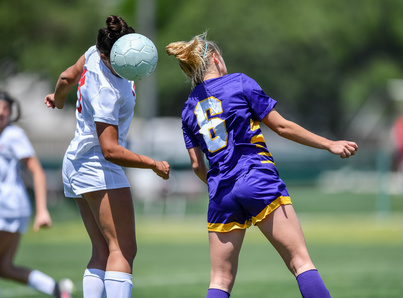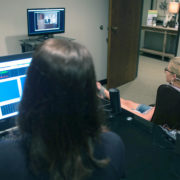Brain scans suggest soccer is riskier for female brains
 We’ve long heard about head trauma due to playing rough sports like rugby and football. But what about soccer? Of particular concern is “heading”, or repeatedly using the head to forward the ball. Studies have found that frequent heading is a common and under-recognized cause of concussion symptoms and may actually cause more damage than the impact from unintentional head-to-head collisions.
We’ve long heard about head trauma due to playing rough sports like rugby and football. But what about soccer? Of particular concern is “heading”, or repeatedly using the head to forward the ball. Studies have found that frequent heading is a common and under-recognized cause of concussion symptoms and may actually cause more damage than the impact from unintentional head-to-head collisions.
Even more revealing, a new study from the Albert Einstein College of Medicine in New York suggests that not only does heading put soccer players’ brains at risk, but that female players may be disproportionately at risk.
Using advanced MRI scanning, Einstein researchers carefully examined the brain scans of 49 men and 49 women, aged 18 to 50 with a median age of 26, who regularly played amateur soccer. Even though both sets of players had headed the ball roughly the same number of times, scans showed that the women had five times more brain tissue damage than the men. Even more surprising, there were more brain matter areas adversely affected in women than the men (eight regions of the brain for women and just three regions for men).
Why the disparity?
Precisely why women might be more sensitive to head injury than men is not known for certain. Researchers have speculated that because women have smaller, less muscular necks than men, heading may impart more rotational force to their heads, jarring the brain within the skull more.
The brain changes detected by the scans were categorized as ‘subclinical’ by the researchers, meaning they were not enough to alter thinking ability. Study researchers were quick to add, however, that subclinical changes are still cause for concern.
So what does this mean?
“The term ‘subclinical pathology’ is often applied before we detect enough brain damage to negatively affect brain function,” says Leanne O’Neil of INDY Neurofeedback. “What is important about this study is that men and women may need to be looked at differently. It makes good sense to identify the risk factors for cumulative brain injury, so those involved in any sport or activity can change their behavior to prevent further damage — and work to help their brains recover.”
What now?
Soccer coaches and researchers agree that a full understanding of the risks of heading while playing soccer will require further research. In the meantime, O’Neil recommends monitoring brain health by getting a qEEG brain map at the beginning of the season and a follow up at the end. All brains are unique and the brain’s ability to fully heal from each impact is individual.
Complete article available at https://medicalxpress.com/news/2018-07-soccer-worse-women-brains-men.html.










